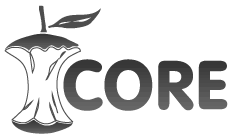Body and Leisure: A look through the practices and discourses of Physical Education students in the key of Gender
DOI:
https://doi.org/10.36881/ma.v2i2.870Keywords:
physical education, leisure, gender, sexualityAbstract
The following research work focuses on analyzing the experiences, practices, and discourses that are present around the body practices carried out by students of the Bachelor's Degree in Physical Education in Montevideo, Uruguay. The conceptualizations of Free Time and Leisure in relation to gender are explored, as well as the historical definitions of the body in physical education and its link with the constructions of gender and sexuality. By crossing the dimensions of gender and sexuality, we seek to understand epistemic ideas' impact on the body's historical definitions within physical education, traditionally reproducing binary gender trajectories. The study also analyzes the limitations, tensions, and opportunities within the temporal contexts in which these practices develop. To approach this investigation, qualitative methodology was used, and semi-structured interviews were carried out with physical education students from Montevideo, Uruguay, to reflect on experiences, emotions, practices, and discourses that support the analysis, understanding, and development of said study holistically. The theoretical and conceptual basis supporting the case's interpretation is aligned with feminist epistemologies.
Downloads
References
Barrán, J. (1994). Historia de la sensibilidad en el Uruguay. Tomo 1: La cultura "bárbara".
Banda Oriental.
Cortazzo, I., & Schettini, P. (2015). Técnicas y estrategias en la investigación cualitativa. Facultad de Trabajo.
Dogliotti, P. (2013). La formación del maestro de educación física en el Uruguay (1921-1929).
Memoria Académica.
Femenias, M. (2000). Sobre sujeto y género. Lecturas feministas desde Beauvoir a Butler.
Catálogos.
Gerlero, J. (2017). Experiencia de ocio en mujeres latino-americanas. Pez en árbol.
Haraway, D. (1991). Manifiesto para Cyborgs, ciencia, tecnología y feminismo socialista a finales del siglo XX. Letra sudaca.
INMUJERES, MIDES, CEIP (2012) “Guía didáctica: La educación física desde un enfoque de género.
Páez, S. (2019). Construcciones discursivas en torno a la obligatoriedad de la educación.
UdelaR.
Rodríguez, R. (2003). Cuerpo, sociedad y escuela: pensar claves para una reflexión relacional.
Scharagrodsky, P. (2002). En la Educación Física queda mucho genero por cortar. Educación Física y Ciencia 6, 103-127. https://www.memoria.fahce.unlp.edu.ar/library?a=d&c=arti&d=Jpr90
Scharagrodsky, P. (2003). Entre machos y no tan machos: el caso de la educación física escolar argentina. Breve genealogía de la educación física escolar argentina o acerca de cómo construir masculinidad y feminidad. Educación Física y Deportes, 41-48 https://www.memoria.fahce.unlp.edu.ar/programas/pp.124/pp.124.pdf
Scharagrodsky, P. (2004). Juntos, pero no revueltos: La educación física mixta en clave de género. Cuadernos de Pesquisa, 59-76. https://www.memoria.fahce.unlp.edu.ar/library?a=d&c=arti&d=Jpr14080
Scharagrodsky, P. (2007). El cuerpo en la Escuela. Explora, 1-16.
Segato, R. (2016). La guerra contra las mujeres. Traficantes de sueños.
Sempol, D. (2013). De los baños a la calle. Random House Mondadori.
Ureta, X. (2017). Roles tradicionales de género y limitaciones de ocio en mujeres.
Varela, N. (2013). Feminismo para principiantes. De Bolsillo.
Downloads
Published
How to Cite
Issue
Section
Categories
License

This work is licensed under a Creative Commons Attribution 4.0 International License.
The content of the publications is the responsibility of the authors. The journal allows authors to maintain copyright on published articles and documents. The license used is Commons Attribution-NonCommercial International License. CC BY NC

















